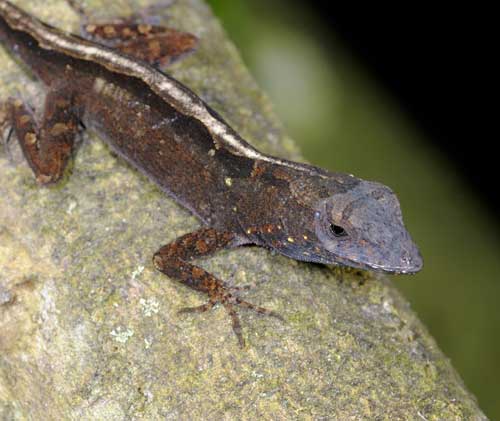
Baby Brown Anole Care: A Comprehensive Guide to Nurturing Your Tiny Reptile
Baby brown anoles, with their captivating emerald scales and curious nature, are captivating creatures that bring joy to reptile enthusiasts. These tiny lizards, native to the southeastern United States, require specialized care to thrive in captivity. This comprehensive guide will provide you with all the essential information you need to ensure the well-being of your baby brown anole.
Housing Requirements
- Enclosure: A 10-gallon terrarium is suitable for a single baby brown anole. As it grows, you may need to upgrade to a larger enclosure.
- Substrate: Provide a substrate that mimics the lizard’s natural habitat, such as cypress mulch, coconut fiber, or sphagnum moss.
- Shelter: Offer multiple hiding places, such as cork bark, live plants, or commercial reptile shelters.
- Temperature: Maintain a temperature gradient within the enclosure, with a warm end of 85-90°F (29-32°C) and a cool end of 75-80°F (24-27°C).
- Humidity: Brown anoles require high humidity levels of 60-80%. Use a hygrometer to monitor humidity and mist the enclosure regularly.
Diet and Nutrition
- Insects: Baby brown anoles are insectivores and require a varied diet of live insects. Offer a variety of insects, such as crickets, mealworms, fruit flies, and dubia roaches.
- Supplements: Dust insects with calcium and vitamin D3 supplements to ensure proper bone development.
- Feeding Frequency: Feed baby brown anoles daily, offering as many insects as they can consume in 10-15 minutes.
Water and Hydration
- Water Bowl: Provide a shallow water bowl filled with fresh water at all times.
- Misting: Mist the enclosure regularly to maintain humidity and provide additional hydration.
Handling and Socialization
- Handling: Handle baby brown anoles gently and infrequently. Support their body and avoid squeezing or holding them tightly.
- Socialization: Brown anoles are solitary creatures and do not require companionship. However, they may tolerate the presence of other anoles of the same species.
Health and Veterinary Care
- Regular Checkups: Schedule regular veterinary checkups to ensure your baby brown anole’s health and well-being.
- Common Health Issues: Baby brown anoles may experience health issues such as respiratory infections, metabolic bone disease, and parasites.
- Signs of Illness: Monitor your lizard for any changes in behavior, appetite, or appearance. Seek veterinary attention promptly if you notice any abnormalities.
Additional Care Tips
- UVB Lighting: Provide UVB lighting for 10-12 hours per day to promote vitamin D3 synthesis.
- Live Plants: Live plants not only add aesthetic appeal but also provide hiding places and improve air quality.
- Enrichment: Offer enrichment activities, such as climbing branches, toys, and live insects, to stimulate your lizard’s natural behaviors.
- Cleaning: Clean the enclosure regularly to remove waste and prevent the buildup of bacteria.
- Patience and Observation: Caring for a baby brown anole requires patience and observation. Pay attention to your lizard’s behavior and adjust its care accordingly.
Conclusion
Baby brown anoles are fascinating and rewarding pets that can bring years of enjoyment. By providing them with proper housing, nutrition, and care, you can ensure their health and well-being. Remember to handle them gently, monitor their health, and provide them with a stimulating environment. With the right care, your baby brown anole will thrive and become a cherished companion.
